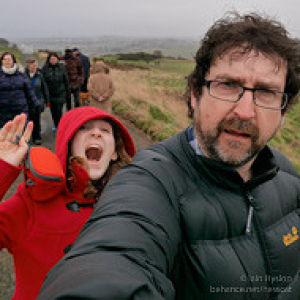Nagasaki
So our first full day, draft itinerary ready for action, are we ready for this?
Our first port of call today, so to speak, was to head to the Nagasaki Port Terminal to see if we could get on a boat tour which had been sold out on the website for months, so they put us on the waiting list and asked to come back later. So we walked on to the other terminal, passing through the Nagasaki Seaside Park, a lovely park by the sea funnily enough and more blooming. We got to say hello to a wee cute dog! The next boat tour was sold out so all hopes were on the first one.
We headed up the hill to Glover Garden, a collection of houses and gardens, mostly western style, which is a World Heritage Site and this is where we were taken on quite a surprising history lesson... Thomas Blake Glover, from Fraserburgh in Scotland worked for a merchant trader buying green tea arriving in Nagasaki in 1859 and within 2 years setup his own trading company and built the house above, which has the pool and view infront of it. He was involved in various trading, including the arms trade, steam engines and shipbuilding. The Motherwell Bridge Company shipped their first crane overseas to Nagasaki in 1909 and it's still in use today. His impact on Nagasaki seems to have been massive. The gardens were lovely, with great views over the bay.
So it was a bit of a dash to get back to the first port and we walked in and this Japanese women approached us and said we had tickets, yeehah. She asked where we were from, Scotland, and she mentioned the Glover Garden which we had just been to and said he was a local hero in Nagasaki... and we'd never heard of him.
Anyway, we boarded the boat and headed off to Hashima Island (nicknamed Gunkanjima which means battleship because it looks like one) where the first coal mine in Japan was established including Glover helping excavating it with Mitsibushi buying it in 1881. The coal mines were under the sea accessed via the island and accomodation, schools and shops were built to host the families working there. Because Japan was closed off from the outside world until 1868, the impact of coal being available helped the country catch up with the rest of the industrial world in 50 years rather than the 500 years it took for the western world, hence the importance of the site. The first "skyscraper" in Japan was built there after they visited Chicago and New York to see how they could accomodate more people. It closed in 1974 after the demand for coal dropped. It reminded us of Alcatraz, the buildings were derelict due to being abandoned and the harsh weather. The boat trip was well worth it and gave great views of area.
Once back on land we headed back to the Peace Park again to see it in the daylight before heading back to the train station for our onward journey to Fukuoka. Once checked in, we went on the subway to the Castle Ruins park where they had lit up the blossom trees with lights, which they do in the week of the sakura, we'll be visiting the castle again tomorrow.
It was a full on day today but we're glad we changed our plan to include Nagaski, where we could have spent a few days which I think will be a common theme for us sadly.

Comments
Sign in or get an account to comment.


